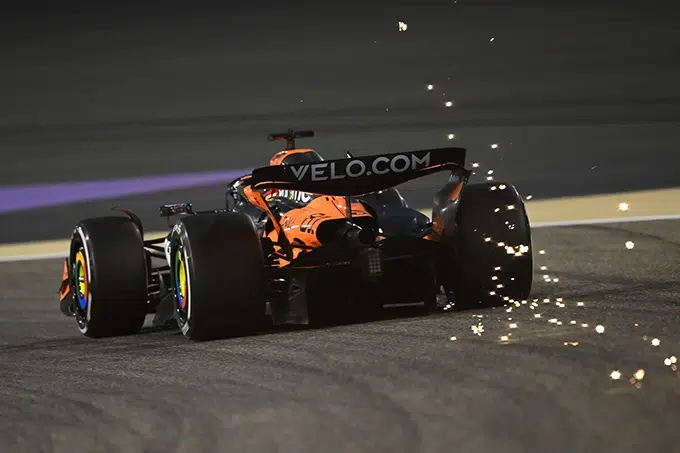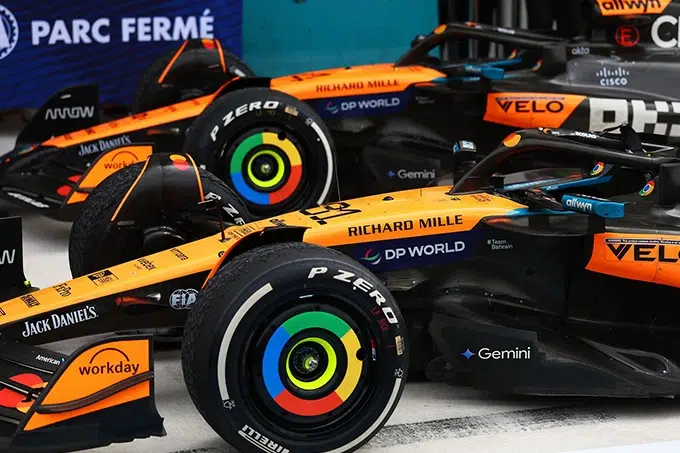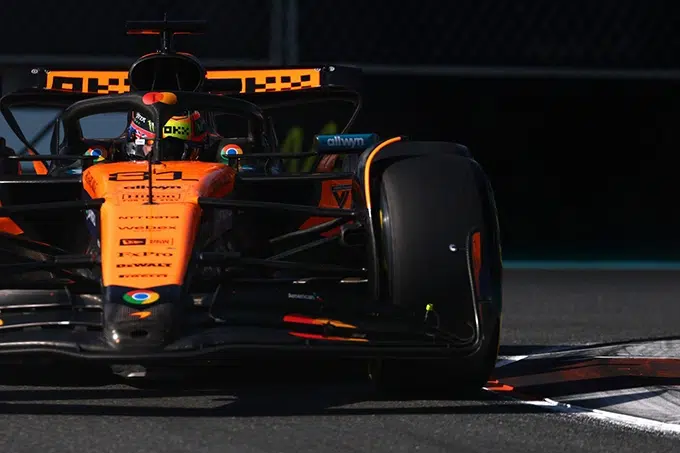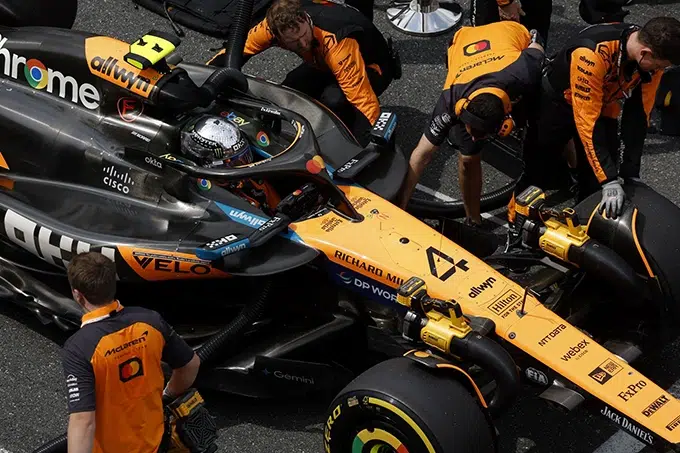McLaren’s tyre mastery may come from advanced brake materials, giving them a thermal edge rivals are racing to understand and copy.
Rival engineers in the Formula 1 paddock now believe they’ve finally cracked the code behind McLaren’s impressive tyre performance in 2025, and it’s all about smart heat management.
Even on their worst days, McLaren seems to have an edge. As Mercedes driver George Russell put it:
“They’re still the best. Their tyre warm-up and degradation over long runs are on another level.”
In fact, some suspect that every other team is getting it wrong when it comes to managing Pirelli tyres.
Red Bull has been particularly vocal, even suggesting off-record that McLaren might be injecting water into their tyres, a claim McLaren CEO Zak Brown mocked in Miami by holding up a water bottle labeled “Tyre Water.” FIA President Mohammed Ben Sulayem also brushed off the idea and warned Red Bull to avoid baseless protests.

“If you file a complaint, it should come out of your budget cap,” Ben Sulayem said, “and you only get the money back if you’re proven right.”
Pirelli’s F1 boss, Mario Isola, strongly denied the water theory as well.
“We monitor tyre pressure and temperature in real-time through sensors. Any foreign substance, like water, would be obvious in the data. It’s not just unlikely, it’s virtually impossible under FIA monitoring.”
But while the water theory has been debunked, a more intriguing idea has emerged, and it’s gaining serious traction in the paddock.
Last season, Red Bull raised concerns about McLaren using brake temperature sensors outside of official practice sessions. Combine that with McLaren’s habit of running aggressive long stints in FP3, and it’s clear they’re chasing performance insights in extreme conditions.

McLaren’s Secret Weapon: Heat Tech Edge
McLaren may be using cutting-edge heat tech with phase-change materials to boost tyre performance and leave rivals chasing answers.
Now, there’s buzz around McLaren’s use of Phase-Change Materials (PCMs) around their braking systems.
These advanced materials can absorb and release thermal energy as they shift between solid and liquid states. It’s cutting-edge tech, and could explain why teams have sometimes noticed moisture inside McLaren’s wheel rims. That moisture might actually be part of the thermal phase transition in action.

The idea may sound unusual, but some engineers are “100% convinced” McLaren is pulling it off, and conversations are already happening on how to replicate the system.
That said, knowing the trick is one thing. Making it work is another. Even if Red Bull or others try to copy the concept, integrating PCMs effectively within a car’s heat-sensitive systems is no small feat. In fact, Max Verstappen’s recent frustrations with brake feel may hint that Red Bull is already experimenting with similar materials.
When asked directly about it, Red Bull boss Christian Horner kept it vague, with little more than a shrug.
One thing’s clear: McLaren’s edge may lie not in tyre trickery, but in how they manage heat where it matters most. And if PCMs are indeed the secret, the rest of the grid has some serious catching up to do.

- Discover More>Formula 1 Emilia-Romagna GP 2025: Schedule and Preview
- Follow us on >FACEBOOK and >TWITTERfor F1 update
